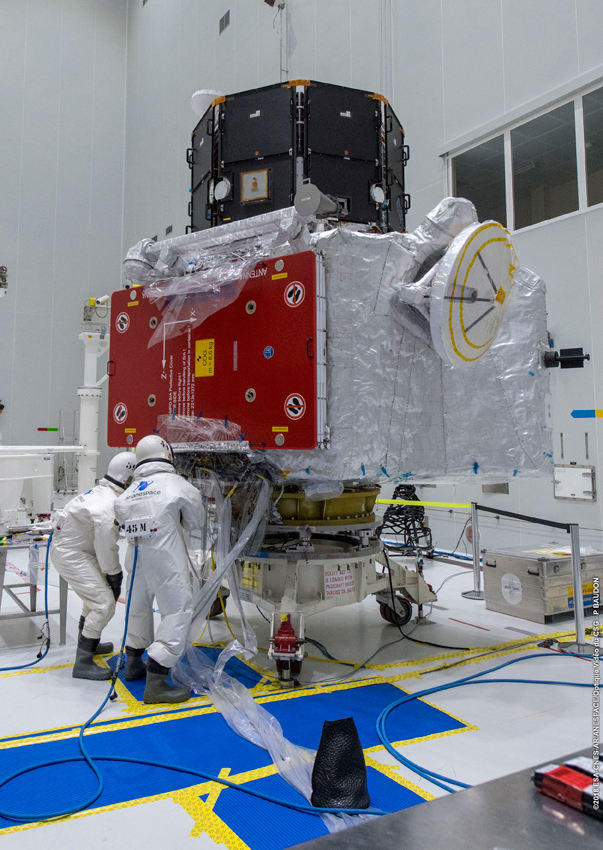Arianespace’s next Ariane 5 launch, on 19th October, will send the BepiColombo spacecraft on its way to the solar system’s smallest and least-explored terrestrial planet: Mercury.
Preparations are moving ahead for Arianespace’s next Ariane 5 launch, which will send the BepiColombo spacecraft on its way to the solar system’s smallest and least-explored terrestrial planet: Mercury.
Scheduled for a 19th October lift-off from the Spaceport in French Guiana, BepiColombo is a joint mission of the European Space Agency (ESA) and the Japan Aerospace Exploration Agency (JAXA).
Its Mercury Composite Spacecraft (MCS) consists of two orbiters: the Mercury Magnetospheric Orbiter (MMO) and the Mercury Planetary Orbiter (MPO); as well as two additional elements: the Mercury Transfer Module (MTM), and the Magnetospheric Orbiter Sunshield and Interface Structure (MOSIF).
The mission comprises two science orbiters: ESA’s Mercury Planetary Orbiter (MPO, or “Bepi”) and JAXA’s Mercury Magnetospheric Orbiter (MMO, or “Mio”). The ESA-built Mercury Transfer Module (MTM) will carry the orbiters to Mercury using a combination of solar electric propulsion and gravity assist flybys.
The seven-year flight will include one flyby of Earth, two at Venus, and six at Mercury, before entering orbit in late 2025.
During its one-year nominal mission (with a possible one-year extension), the MPO and MMO will examine the peculiarities of Mercury’s internal structure and magnetic field generation, as well as how the planet interacts with the sun and solar wind. Goals of the mission also include investigating Mercury’s surface features and chemistry.
BepiColombo was built under the industrial leadership of Airbus, which heads a consortium of 83 companies from 16 countries. The spacecraft was shipped to Kourou in April.
Designated Flight VA245 in Arianespace’s launcher family numbering system, the BepiColombo mission will be the company’s seventh in 2018, following heavy-lift Ariane 5 flights in September, July, April and January; as well as a light-lift Vega launch in August and a medium-lift Soyuz mission in March.

